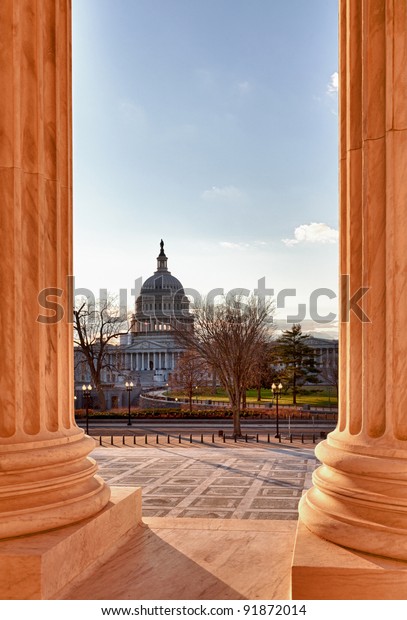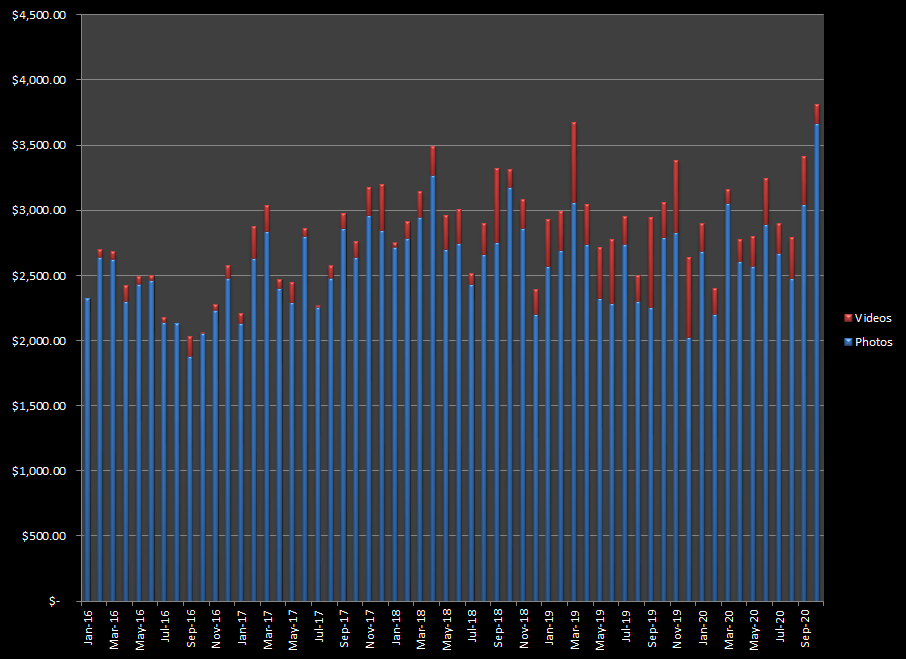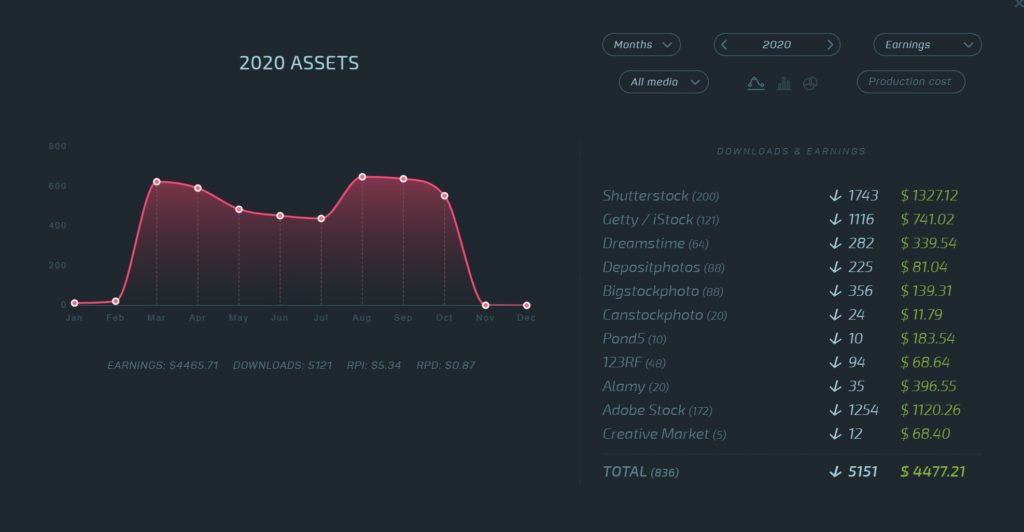Earnings from Stock Photography – October 2020
A good month or what?
I’ll answer that question right away – a great month. If the stars have ever aligned over my portfolio, it was this month as multiple things seem to have gone well, and I ended the month with a career best of $3813!

As you can see, well above anything else this year and certainly a big step change over the same month in previous years.
So what went well?
Right from the beginning of the month, things looked good. On the 2nd October, I sold my ever popular bengal cat photo for $136.50 on Shutterstock and this same image went on to sell for $77 on Shutterstock again, and then $20 on EyeEM to earn a total of $248 in the month.

Then the same cat (different pose) sold for $42 on Shutterstock again. It just goes to show how old images (maybe 8 years old now) can still make it if they are not dated. Then I had some good sales of other images – this one sold for $50 net on Alamy:

A simple concept that I created in July. What I think is useful about this image is that the buyer can use elements of this in their own illustrations. I have seen this used in a hour glass illustration in the Washington Post as well as cut to a state outline. I did my own version of that with a map of the USA, so you can see how a buyer can buy this and get multiple uses out of it.
EyeEM also surprised me with three well priced sales coming a couple of days ago – well after they had reported their sales via the Getty partnership. I got $53 via EyeEM/Getty and then an additional unexpected $85 from sales on their own agency, including this one (probably another election related sale) for $50:

Altogether I earned $716 from image sales where the sales price was greater than $10, which I think went a long way towards my record month.
How did the Agencies perform?
The leader position, as usual was taken by Shutterstock which fell just short of $1000 this month. However Adobe continued to pick up and ended the month with $676 and iStock did very well with $507. Alamy, with the big sales mentioned earlier, came in with $355 although that included an unexpected $150 from the DACS scheme that operates in the UK to get incremental royalty income. Finally, Canva (still reporting the double earnings until this coming month) with $298. I’ll do a full report on agency earnings when I do my annual report in January so you have a good feel for which agencies work for me.
The big surprise for me (actually more than one surprise) was that Canstock earned a record $77, helped along by this one from Kauai on a wet and dreary day for $30:

I’m sure there are many sunny shots of this church online, so I suppose it tells us that a moody shot is worth taking if that is what the conditions are when you are passing!
The other surprise was a total of $139 in earnings from Creative Market. One buyer bought about six different images of a Christmas tree in the corner of my home including ones where I took pictures of myself putting it together. Again – the message is to take shots of things you do around the home. It doesn’t take long to set them up and you never know when someone might need a series. OK, another surprise – $84 in earnings on Society6 from various prints and products. I recently put my percentage margin higher on the art products on that site and it doesn’t seem to have impacted sales although it did impact my earnings positively. On the negative side, I reduced my prices drastically on Fine Art America earlier in the month and so far – zero sales! Not a very successful experiment so far!
Videos are selling, but not too well…
Overall, I sold $151 in video sales in October, so it definitely didn’t make up much of the total this month. Here is my overall chart of photo versus video sales:

This was helped by a sale on Adobe Stock of the usual waves behind a cruise ship video for $70:
How many assets do you need?
I get this question most months if I don’t include this graph:

Can you start now and earn money?
A very common question, especially with the changes that agencies have made in 2020. As an experiment, I started to track the earnings of images (and videos) that I have created in 2020 and uploaded to the various Agencies I support. This has been an unusual year, as we all know, with both a pandemic and a big election in the USA, but I don’t think there is anything that my new uploads gain (in terms of how they appear in searches) compared with someone who has only been uploading for a year or two. Of course, on Shutterstock I used to get the highest payout for subscription sales and now I am Level 5 (for photos) in their new contributor plan, so take that into account in looking at this chart:

A reader suggested that I create a collection in Microstockr Pro and I did just that – a great idea. Now I can see, month by month, how much these assets created in 2020 have earned. Without this being a hard sell, I have talked about the ideas and concepts behind these new images in my Premium section with the intent of giving as much advance warning as I can of new concepts that I think might turn into successful stock photos. Overall, I am very pleased with the results of my efforts this year. As Brutally Honest Alex has been reporting, the income from travel photography has not been great this year and so it is clear that moving across into the creation of images that are going to be in demand was the right thing for me to do. Almost all of these were just created in my home studio and didn’t require much in the way of special props or lighting effects. So it does perhaps show that if you work at this, you can still make some money, even in 2020.
I hope you have had some successes in 2020 as well and are keeping well!







Hy there Mr. Steve. Can you tell me please, since the new earnings structure took effect on Shutterstock, what was your lowest license commission?
10c. I do get quite a number at the 10 or 11c range but also ones that are more than the 38c I used to receive. I don’t track this any longer (in fact I never look at the daily Shutterstock earnings report), but when I did calculate the changes in June/July, I decided the average subscription for me would be around 26c or so.
Steve
So what about video earnings? What was the lowest license? I am thinkin about recording some footage but I don’t think it’s worthit if there are absolut 10c licenses
Video was not great in October – $161 in total. Getty/istock are the worst for video sale prices with 13 downloads for $9! Also two $0.96 and one $0.84 from Shutterstock. But as I have explained in the past, I don’t get bothered about the actual values per download. I’m more interested in the totals each month. I know not everyone agrees with that position and that is fine by me. If you can’t accept a small license fee for some occasional usage, then you will probably not be happy these days with stock video.
Hi! :). I wanted to share my experience. I looked some stock photo earnings reviewers from youtube, that some people actually made money from those free photo sites. Pexels has this donation button, so the free photo downloaders can donate to photographers. I tried this for a month. I uploaded 11 photos, had 115 downloads…with ZERO donations. I deleted my account immediately. Experiment is over! Told them to go stockphoto site, then I will join again. I am scared of the traffic going on there, 23.000 views in a month, sad… . Still hate the free photo sites :D. ( Stockphotography is my full time job now).
Thanks for the update. I often wondered how people made money on those sites and the answer seems to be, not very often. Yes, the free sites are not helping the paid photographers at all and yet people seem to keep uploading – some good and great shots as well.
First of all, thank you for continuing to share your experiences! A while back you wrote that you were going to try Yay Micro (or Yay Images, or whatever it is called now) and I was wondering how that was going?
Not great! 29c in October…
I have a couple of questions about Alamy. (I asked on Alamy blog but no answer.)
Is the price in Recent Sales the amount that Alamy gets or the amount that the contributor is paid? If it is what Alamy gets, where can I see what the contributor is paid?
If someone buys an image, downloads it and gets a refund, it seems like they could still use that image and no one would be the wiser. Is that something that is happening?
The answers always come here! In the recent sales section (and on the main summary page), you see the gross sales price – what the customer paid. Of course, Alamy and sometimes their distributor takes a piece of that and so you need to see the net price. I use Microstockr Pro that shows me the actual value of Alamy sales, but if you look at Account Balance, you will see all the elements of the sale. It still doesn’t directly show your earnings, but it shows the gross and the deductions.
With the refunds, you are right. The person downloading the file could use it, but people with Alamy accounts are probably not there to steal the images. They can do that by finding the same image online if it has already been used and can right click and use that. It is one of those things that you can’t do anything about.
Hi Steve, I had a look to your portfolio at shutterstock. I was curios about editorial using of your images like the beautiful church and could not find some infos about when buying. Also when showing forms, money or letters on the cinema.
I’m not sure which church you are thinking about there, but the rules for what is editorial are quite complex and not very clear (in the USA at least, and I think it is the same in many other countries). The general rule is that if you are in a public place, you can take things that you can see without much restrictions. So if you stand on a street and take a picture of a church, then you can usually sell that as a commercial image. If there is something written on it (like a noticeboard) then the content of that noticeboard falls into more of a copyrighted work and most agencies would either want that removed, or for it to be sold as editorial. Buildings in general are not copyrighted, the design of a few famous ones (by famous architects) are copyrighted and those are often only allowed as editorial and sometimes only as part of a general city view. So buildings generally are not an issue. Then there is another rule in the US that things created by the government are not copyrighted, so tax forms, money, federal buildings etc. can be used commercially. Many of my forms and currency images are of US origin. The UK controls pictures of currency (or of the Queens head on coins) and I have just had some images removed from Shutterstock because they contained UK bank notes. The letters on the cinema are my own words. The cinema was abandoned and there were no words on the board, so I just added my own messages. Normally, if that had been someone else’s work, it would have had to be editorial. Hope that helps